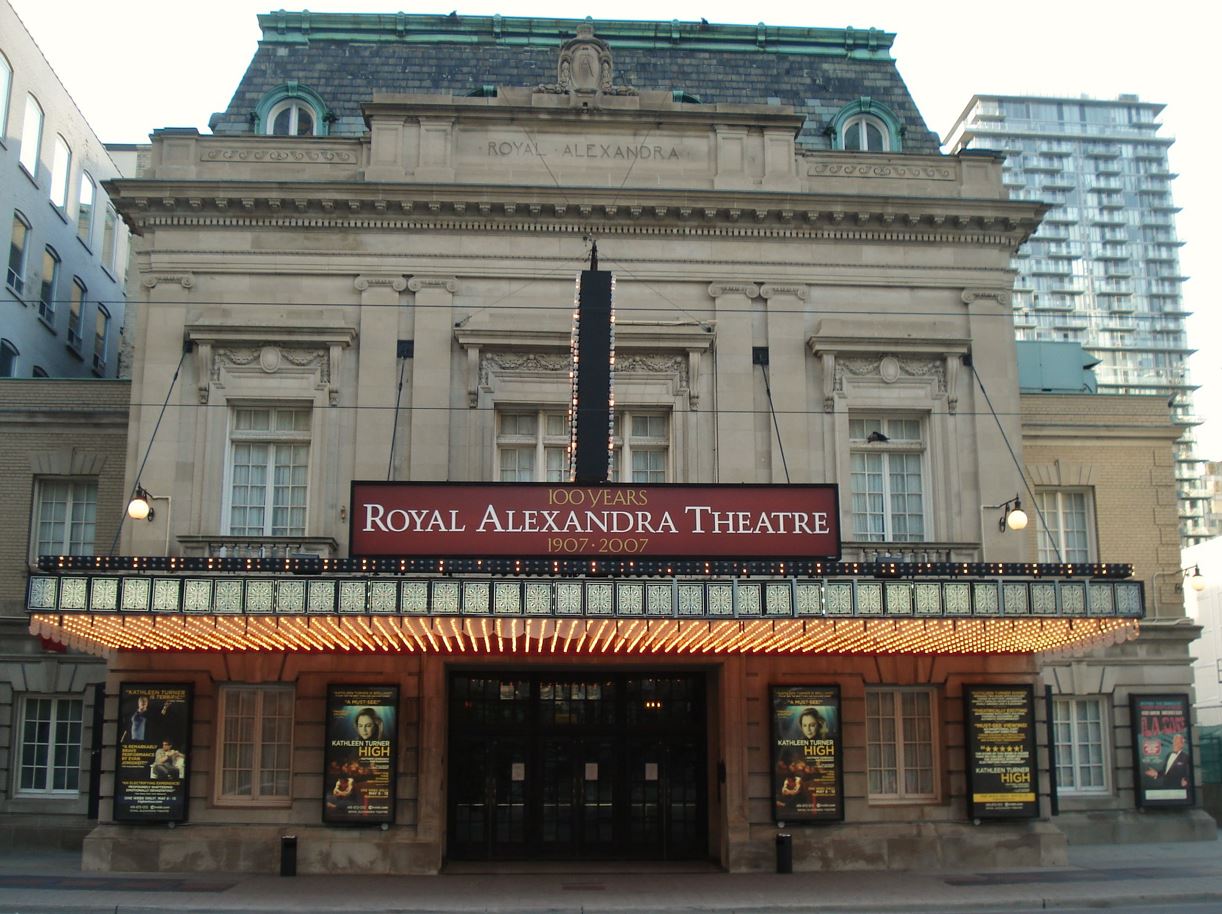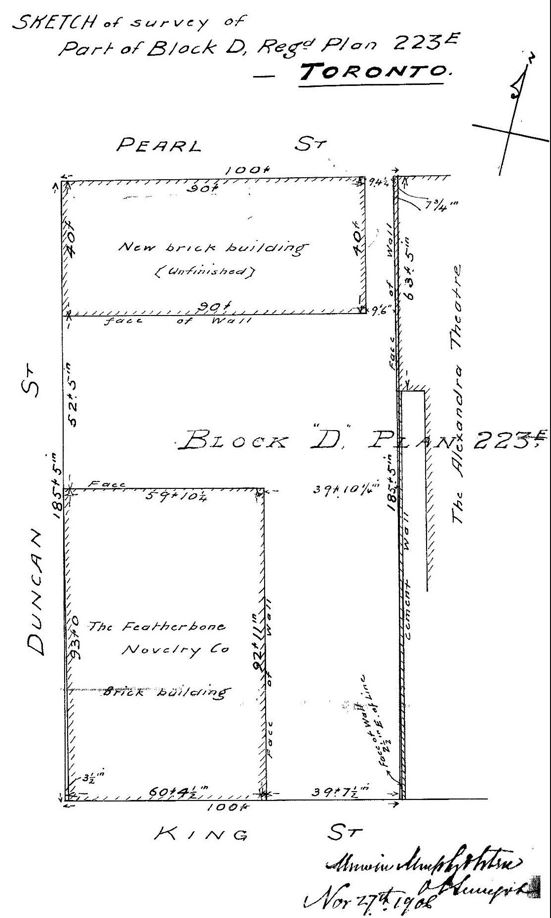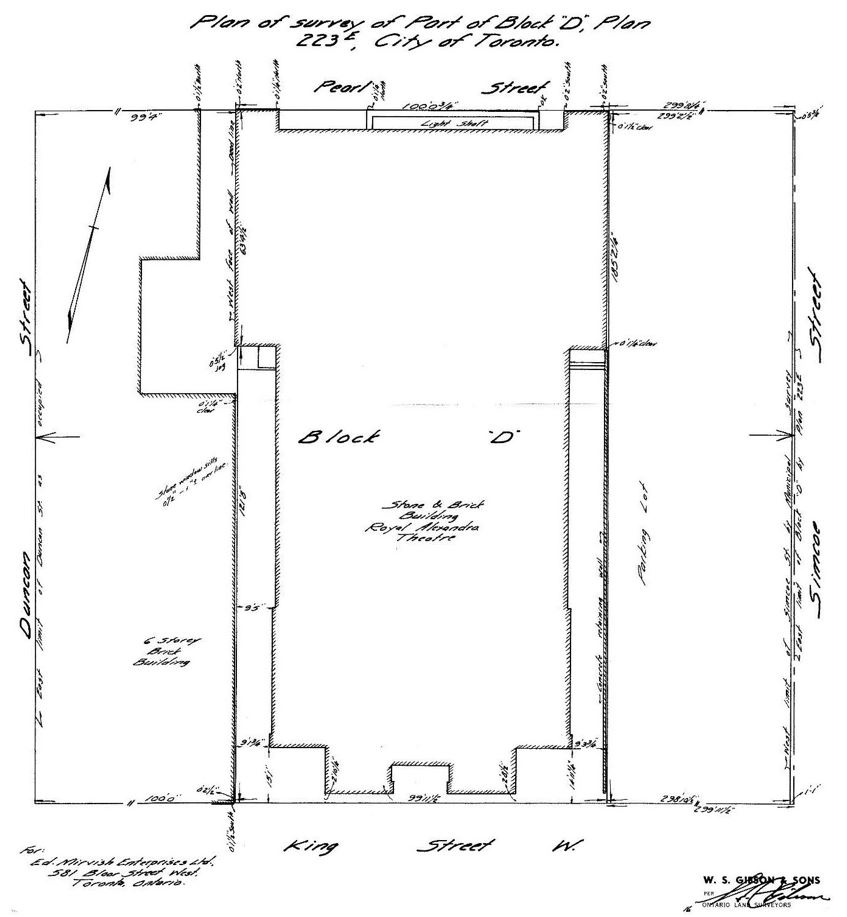Behind the Curtain: Surveying the Rise of Toronto’s Entertainment District

Toronto’s Theatre District is a major attraction for many visitors looking to immerse themselves in a show and enjoy a day in the city. Whether you are eight or eighty, there is something special about attending a live production – the lights, the music, the energy, it’s a captivating experience that cannot be duplicated. Many of Toronto’s theatres today exist because of one man: Edwin Mirvish, more commonly known as Ed or Honest Ed. Not only was he the idea man behind these theatres, but he also personally financed the construction and revitalization of key venues that shaped the city's theatrical landscape. In this article, his contributions to the community will be brought to life through historic survey plans that offer concrete proof of how urban spaces evolve, demonstrating how one man left a lasting impression on the city.
|
It all started with one theatre, The Royal Alexandra. Situated in an underused industrial area, the theatre was set for demolition after years of neglect. With many of the factories and mills moving outside of the city due to rising taxes and operating costs, the area was mostly underutilized. Ed Mirvish saw potential in the land and acquired the Royal Alexandra for $200,000 in 1963. Reviving the Neighbourhood, One Parcel at a TimeFollowing the restoration of the Royal Alex, Mirvish began purchasing properties around the theatre to develop the area into one of cultural significance. Mirvish opened a chain of restaurants in the area, the most popular of which was “Ed’s Warehouse”; a former manufacturing warehouse converted into a restaurant with a red and gold interior and mismatched décor. The eccentric and unique restaurant was a success, which started a trend of many similar restaurants opening in the area. This Sketch of Survey (right), dated Nov 1906, illustrates the lot at the corner of King and Duncan Streets (now known as Ed Mirvish Way). And shows the industrial use of the land at that time, revealing just how radical a change this was.
|
 |
 |
This survey completed by W.S Gibson in 1965 was commissioned by Ed Mirvish Enterprises shortly after the restoration of the Royal Alexandra Theatre. These survey plans don’t just show lot lines, they map the city’s evolution, revealing how a forgotten industrial neighbourhood transformed into world-class theatres and cultural landmarks. |
The Princess of Wales Theatre: Parking Lot to Theatre Lot
With the success of the Royal Alexandra and a growing population, in 1993, Mirvish and his son David decided to build the Princess of Wales Theatre from the ground up. This was the first privately financed legitimate theatre in North America in over 30 years. Before the theatre, the land was used as a parking lot, but Mirvish transformed it into a 2,000-seat architectural landmark.

This image, taken from a 1985 Property Data Map, shows the location of the Royal Alexandra theatre and the near by parking lot that was used as the location for the future Princess of Wales Theatre on King Street W.
Zoning Implications: From Industry to Entertainment
From industrial manufacturing to theatres and restaurants, the King West area saw a fundamental shift in zoning and land use. The earlier part of the century saw this land serving industries like textiles, warehousing, and printing. In contrast, the latter half of the century saw a cultural boom primarily focused on entertainment, tourism, and mixed-use development, which was not as popular then as it is in today's modern developments.
In 1996, the City of Toronto’s King-Spadina Secondary Plan Update recognized the “deindustrialization” of the area and instead referred to it as a “Cultural Precinct” that encouraged the growth of creative industries and cultural spaces. This was a clear sign that the neighbourhood had undergone a complete transformation from its original purpose.
Ed Mirvish’s contributions to the city were about more than commerce—they were about creating a cultural community that combined the arts, heritage, and entertainment in an urban setting. His vision helped to shape Toronto as a major Theatre City and put a spotlight on the power of art to revitalize struggling neighbourhoods. Survey plans serve as the footprints of this transformation—concrete, dated, and detailed. With their help, we can trace these changes lot by lot, uncovering how once-industrial spaces were reimagined as vibrant cultural hubs. The curtain may have risen on new developments, but the surveys remain as the set pieces that document it all
References:
BlogTO. “The History of Ed's Warehouse, a Restaurant That Was a Toronto Landmark for Decades.” BlogTO, 26 Apr. 2021, www.blogto.com/eat_drink/2021/04/history-eds-warehouse-restaurant-toronto/ . Accessed May 2025.
“Memories of Roast Beef, Mashed Potatoes and Peas.” Mirvish, www.mirvish.com/meanwhile/issue-34/memories-of-roast-beef-mashed-potatoes-peas . Accessed May 2025.
“Royal Alexandra Theatre.” Mirvish, www.mirvish.com/visit/theatres/royal-alexandra-theatre . Accessed May 2025.
“History of the Mirvish Theatre: Timeline.” Mirvish, www.mirvish.com/learn/timelines/history-of-mirvish-theatre-timeline . Accessed May 2025.
City of Toronto. King-Spadina Secondary Plan Review – Cultural Precinct Update. 2020, www.toronto.ca/legdocs/mmis/2020/te/bgrd/backgroundfile-141218.pdf . Accessed May 2025.
City of Toronto. Heritage Designation for 260–274 King Street West. 2010, www.toronto.ca/legdocs/mmis/2010/pb/bgrd/backgroundfile-32132.pdf . Accessed May 2025.
Images:
Krcmar Surveyors Ltd. Survey Plan Archive. Accessed via Protect Your Boundaries Survey Plan Database, www.protectyourboundaries.ca .
Torebelxtguy. Royal Alexandra Theatre,












